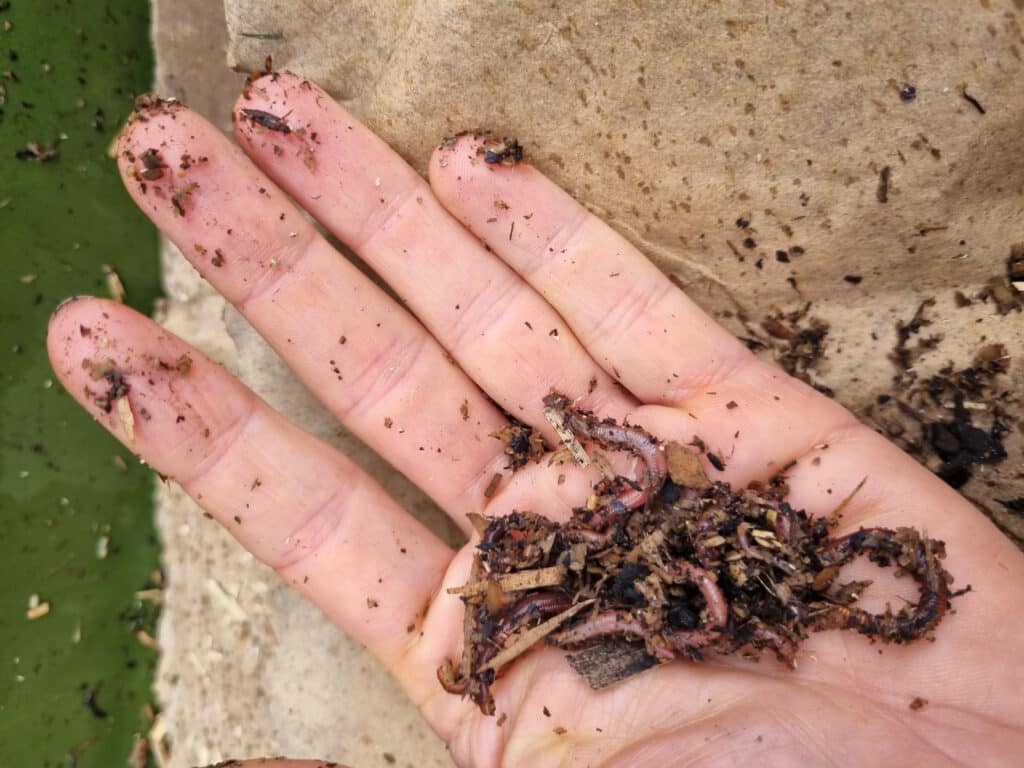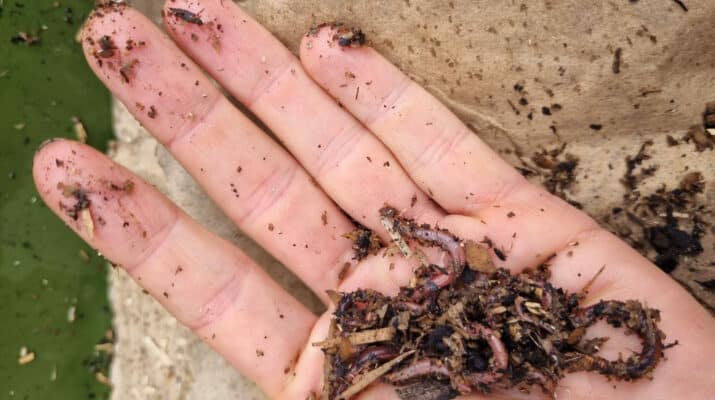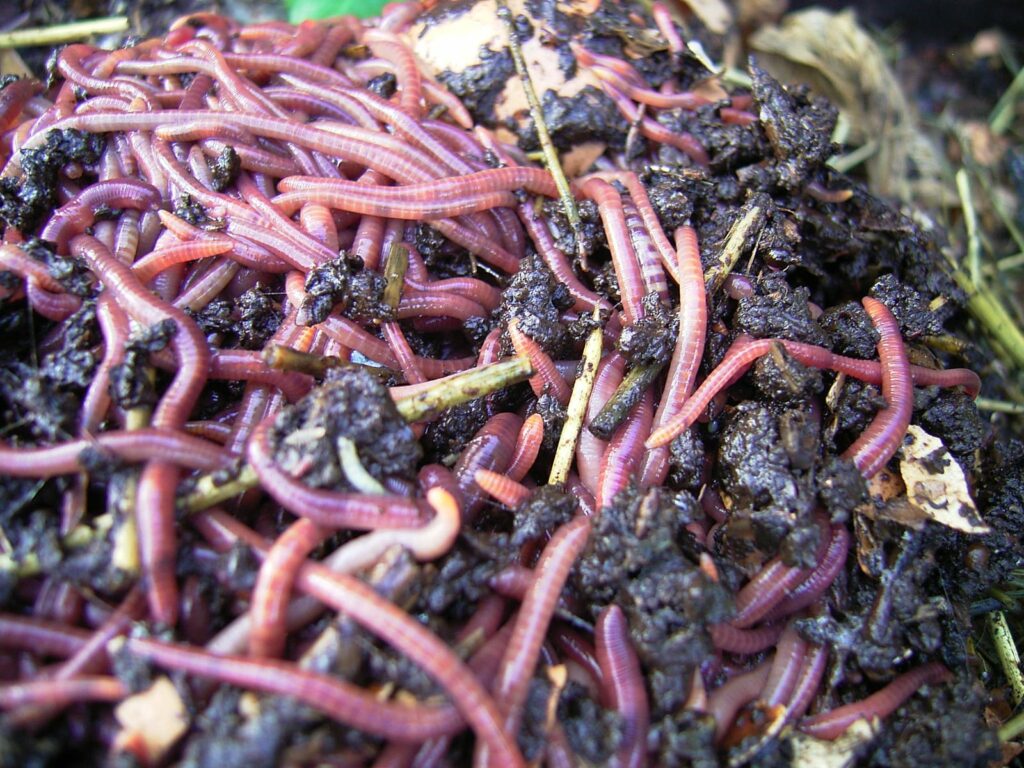Worm farms have become increasingly popular due to the vast amount of benefits they provide. They help reduce food waste and also produce nutrient-rich vermicompost that can be used to improve soil quality. A question I often is “Can you have too many worms in your worm farm?”. This article will attempt to answer that question in detail and discuss the optimal number of worms in a worm farm, their role in the process, and what to do with any extra worms you might have.
The short answer to “Can you have too many worms in your worm farm?” is No. Too many worms in a worm farm or composting pile is very unlikely. Once the worm population reaches a certain threshold, the worm’s reproductive rate naturally decreases. This is because the limited amount of food in the composting bin can only support a certain number of worms. As the number of worms increases and competition for food intensifies, the population growth rate naturally decreases. The worm population will naturally self-regulate based on the available food. So there is no need to worry about having too many worms in a worm farm or composting pile.
What is the Optimal Number of Worms in a Worm Farm
The number of worms in the worm farm depends on a few things. Such as the size of the worm bin and the amount of waste being produced. It’s essential to have the correct number of worms to keep our worms healthy and for the overall success of our worm farm. The general rule of thumb is to double your weekly waste weight in worms: E.g., roughly 2 pounds of worms for every pound of food waste you produce weekly.
The amount of worms you need also depends on the size of your worm bin. If the bin is too small for the number of worms, it may lead to overcrowding and reduced productivity. On the other hand, if the farm is too large, it can be more challenging for the worms to find food, and the composting process may slow down.
How Many Worms do i need Calculator
Enter the amount of weekly waste you produce (in pounds):

The Role of Worms in a Worm Farm
Worms are crucial in breaking down organic waste in a worm farm. They eat the waste and produce vermicompost, a nutrient-rich soil amendment. Worms also help aerate the compost and maintain a healthy balance of microorganisms.
It’s important to note that worms will regulate their population based on the space and food available to them. Therefore, you will likely have fewer worms if you feed them the appropriate amount of food and have a suitable bin size.
Managing Extra Worms
If you do end up with more worms than you need or have space for, there are several things you can do.
- You can sell extra worms to other worm farmers or use them for fishing bait.
- You can give extra worms to friends or family members interested in starting their own worm farms.
- Feed the extra worms to your chickens.
- Add them to your backyard composter to improve and speed up the composting process
Alternatively, you can split the worm bin or use the light method to remove additional worms from your worm farm.
Splitting the Worm Bin
Splitting the worm bin involves dividing the bin’s contents into two separate bins. This method helps prevents overcrowding and provides more space for the worms to move around. To split the worm bin, follow these steps:
- Remove all of the compost and worms from the bin.
- Fill one-third of the new bin with fresh bedding material.
- Add half of the compost and worms to the new bin.
- Cover the worms with another layer of bedding material.
- Repeat the process with the remaining compost and worms in the second bin.
- Leave the new bins for a few days to allow the worms to settle.
Using the Light Method
The light method involves using light to encourage the worms to move away from the compost. To use this method, follow these steps:
- Remove some of the worm compost and place it on a covered surface like a tarp or cardboard.
- Shine a bright light on the compost or place it in the sun for a few minutes.
- Wait a few minutes for the worms to move away from the light and toward the bottom of the pile.
- Use a trowel or a gloved hand to remove the compost from the top of the pile and place it back in the worm bin.
Maintaining the Optimal Number of Worms in Your Worm Farm
Now that you’ve removed any extra worms from your worm farm, it’s essential to keep a healthy farm, which will give us an optimal number of worms for the health and productivity of your worm farm. If you want to add more worms, you will need to do it gradually as your worm farm grows, but be careful to add only a few at a time.
To maintain the optimal number of worms in your worm farm, follow these tips:
- Monitor the amount of waste you add to the worm bin and adjust accordingly. If you’re producing more waste than the worms can process, you may need to add more worms.
- Add new worms gradually rather than all at once. Adding too many worms at once can cause competition for resources and lead to a decline in the worm population.
- Ensure that your worm bin has enough space and bedding for the worms to thrive. Suppose the bin becomes overcrowded or the bedding becomes compacted. In that case, it can limit the worms’ ability to move and process waste.
- Regularly check the moisture level of the bedding and adjust it as needed. Worms require a moist environment to thrive, but too much moisture can lead to anaerobic conditions and odors.
Conclusion
In summary, it’s hard for you to have too many worms in your worm farm. Still, it’s vital to maintain the optimal number of worms for the health and productivity of your worm farm. Factors like the amount of waste you produce, the size of your worm bin, and the moisture level of the bedding all play a role in determining the optimal number of worms. Suppose you do end up with too many worms. There are several options for managing them, using the light method or splitting the worm bin to remove them. Following our tips, you can maintain a healthy and productive worm farm that produces high-quality vermicompost for your plants and garden.
References
https://extension.psu.edu/earthworm-production
https://www.sas.upenn.edu/~rlenet/Earthworms.html
https://extension.okstate.edu/fact-sheets/the-basics-of-vermicomposting.html


